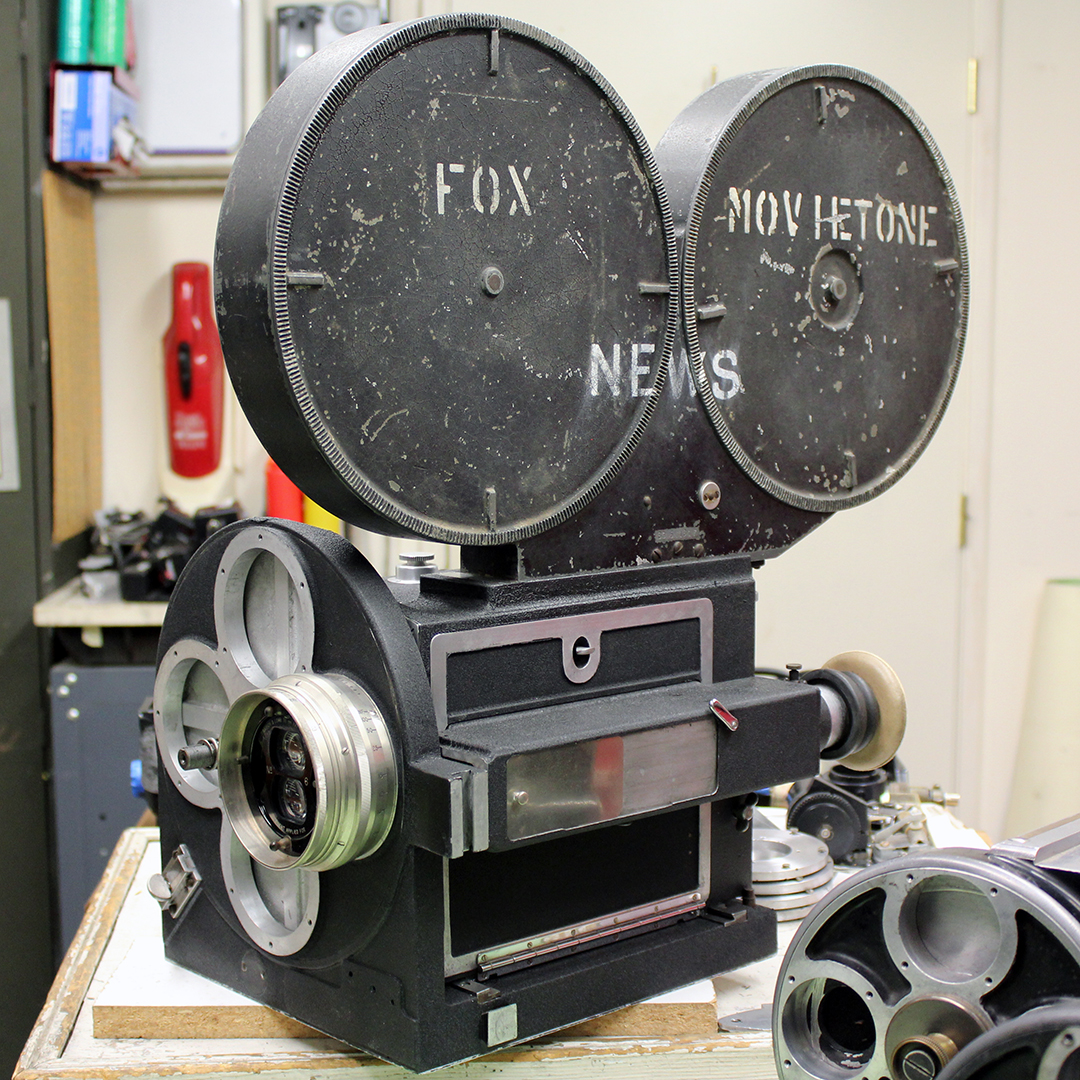
Stein Two-Color Camera with Bausch & Lomb Raytar Binocular Lens

$15,000
Item #C10987
In the 1920's, William Fox commissioned the New York-based firm Wm. P. Stein & Co. to build cameras for a new color process called "Natural Color". The Fox Natural Color, or Nature Color, process made use of one strip of black and white film shot through the custom designed Bausch & Lomb Raytar binocular lens to which red and green filters were affixed. The Stein camera exposed two images on each film frame simultaneously (one image through a red filter and one image through a green filter). This camera original was later used to generate two seperate prints, one containing only the red record image and one containing only the green record image. These two color prints were then precision aligned and cemented together to create a 2-color release print to be used in projection. A standard 35mm film frame is 4 perforations tall. The Stein camera was designed to move 8 perforations of film per each pull-down cycle, which allowed for two images, one on top of the other, for this color process. In the 1950's Paramount adapted several of these old Stein cameras by removing the divider that formed the two images on each frame to create one 8-perf film frame. This camera, dubbed the "Lazy-8", was the prototype for their VistaVision widescreen format, first used in the 1954 film "White Christmas".
